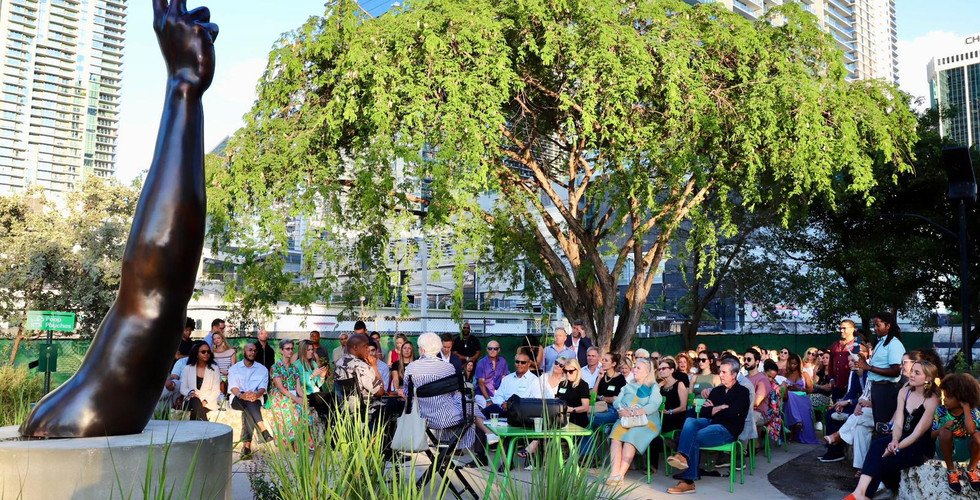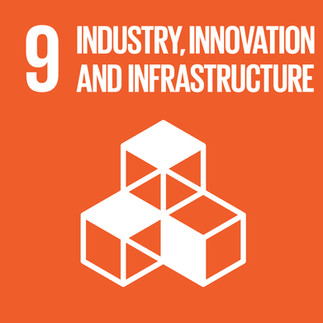WALK SLOW, CYCLE SAFELY, AND BREATHE GREEN
- Yulia Strokova

- Jun 18, 2023
- 5 min read
Updated: Jun 26, 2023
How The Underline empowers locals to regenerate urban spaces & reimagine our relationship with the public land
By Sarah Knowlton, Samantha Schalit, & Yulia Strokova

“Why don’t we turn this into something?” Meg Daly asked, looking at the underbelly of the metrorail. Driving down U.S. 1, you’ve seen pieces of it: the fenced-in dirt and patchy grass framed by graffitied walls or backlots of businesses. Miami’s urban design is precarious. The budding automotive industry of the 20th century permanently influenced the city’s infrastructure, and today’s population is stuck with a cityscape dominated by cars. With incomplete public transit systems and little room for bike lanes or public green spaces, the easiest way to traverse Miami’s sprawling neighborhoods is by private vehicle. But for today’s residents, its counterintuitive urban design is a limitation to a sustainable lifestyle.
Meg is the creative soul and brain behind The Underline, the 10 miles of metrorail underpass that’s being redesigned and reinvigorated as a linear park with bike lanes, walk lanes, green spaces, and so much more. After a cycling accident which left both of her arms broken, Meg had to reacquaint herself with the other means of transportation that were available to her disabled body. Once healed enough, she started taking the metrorail to her physical therapy appointments.
“There was something about slowing down and walking in a space rather than driving by it,” she said.
Feeling a space goes beyond your interaction with the physical or tactile aspects of the area. What Meg felt in the immense size of the metrorail underpass was an opportunity to create connection and enhance the lives that pass by it. She spoke about the metro stations in New York, how you can get a cup of noodles, the latest paper, or catch a live show along your daily commute. As Meg put it, “The transit can be a destination in its own right.”

As our modes of communication evolve and our desires to connect expand, so must urban infrastructure evolve as it is a means to connect. Meg focuses this lens, explaining, “We have to look at urban infrastructure as having different purposes over time.” This means listening to citizens who interact with this infrastructure; their insight is critical to good design, and good design fully considers how a space can benefit all who come in contact with it. For most of modern history, that was not the approach.
Today, we have to lean into the evolution of purpose. Throughout each phase of construction, The Underline’s leadership holds numerous community meetings, and more importantly, publicizes them by going to “churches, neighborhood associations, even hanging out at Publix to tell people to come,” shares Meg.
Community involvement is a cornerstone of The Underline project. Through public engagement and collaboration, the initiative has already witnessed tremendous support, with 1.5 million annual visitors and over 200 free programs organized each year.
Phase 1 of the project, aptly named “Brickell Backyard,” was opened to the public in 2021. This half-mile stretch between the Miami River and Coral Way features recreation spaces, butterfly gardens, dining areas, and a public art gallery that will eventually stretch the full 10 miles.
The latest addition is Duality, a sculpture by Brooklyn-based artist Hank Willis Thomas, whose piece All Power to All People visited Miami in 2020. Hank describes Duality as a work that “calls us to believe in a more humane version of ourselves.” Located in the River Room of the Brickell Backyard, viewers of Duality can hear that call ring clearly as they’re surrounded by native plants and pollinators, green infrastructure, and community-focused public spaces with a full schedule of events for all ages.
Cover Photo: Victoria Rogers of Knight Foundation, Hank Willis Thomas, Artist, & Meg Daly, Founder of The Underline
The groundbreaking for Phase 3, stretching along U.S. 1 from Coconut Grove to Dadeland South, is scheduled for this fall. The planning is already in effect with contributions from residents on design features that will accommodate the needs of nearby communities. At open community meetings, the team presented the latest renderings and discussed the path layout, intersection improvements, urban planting, and amenities.
The Underline area will bring a 62.5% increase in trees and palms as its design team’s guiding principles prioritize shade, native species, resiliency, and ecology. The focused approach is regenerating natural ecosystems endemic to Miami, like the Pine Rockland, Hardwood Hammock, Pollinator, and Wet Prairie. Native plant life will also be used to enhance other experiences at The Underline, like the 10-foot-wide bike path that will be protected from vehicle traffic along U.S. 1 by a plant buffer area. The landscape architects are employing the Japanese miyawaki afforestation method, which restores biodiversity in resource-depleted communities.
“By the time The Underline completes its 10 miles, we will have planted approximately 500,000 new plants and trees. And we're looking at how to do that in a way that doesn't require irrigation or fertilization. We're making sure that we're building micro-forests, which means hundreds of trees will be very close together to create biodiversity that would not be hurt by urban development,” presented Patrice Gillespie Smith, Chief Operating Officer of The Underline, during the panel talk on Building Resilient & Adaptive Future Urban Coastlines hosted by the Seaworthy Collective.
When The Underline was designed, much consideration was given to managing flooding and stormwater management. Future sections will have bioswales, an alternative to concrete gutters and storm sewers. These long-channeled depressions or trenches bordered with native vegetation capture and treat stormwater runoff before it is released to a watershed or storm sewer.
While bringing into existence complex urban developments, like The Underline, requires a technical team of engineers, the dreams and ideas that fuel better, inclusive urban design come from the public, and this is where the progression of The Underline is a case of successful community engagement. What planting type brings the most value to you and your community? What type of art would you like to see along the entire Underline corridor? What fitness space would you use the most?
Many features of Phase 3, such as the plant buffer along the bike path and separate crosswalks for pedestrians and cyclists, were pulled directly from surveys taken by community members to determine what aspects of the new development are a priority for those that would engage with the space.
"If you listen and empower people to bring their ideas to the table, it gets very contagious," Meg adds. "Every good idea we have on The Underline came from the community because we listen. You have to let people know that you just believe in them and they will solve all the problems of the world."
Learn more about how we can reawaken our roles in urban design and reimagine our relationship with the land in our featured article, Stewards of the Land, published in Impact.Edition magazine, Issue 02. Download it here or get a print copy. Whether a single gift or a bulk order, your donation supports independent community-driven media & the organizations we feature. Thank you for making a difference!




















Comments